Tank Truck Sieve protects Silo
Reliably remove foreign bodies in the PVC powder before silo filling
In order not to contaminate individual product batches and production plants during the further processing of delivered PVC powder into high-quality plastic profiles, a plastics producer requires an upstream protective screening system that removes foreign bodies directly when the tanker truck is emptied.
The medium-sized company manufactures plastic profiles for windows and doors in residential and commercial construction as well as for a wide range of outdoor applications. The majority of the products sold are registered brands of high quality.
Production takes place in modern extrusion lines with coextrusion and multi-strand technology as well as automated downstream equipment. The PVC powder is stored in silos for the manufacture of the plastic products, from where it is continuously fed into the production process.
Safety from tanker emptying
In order to avoid contamination of the silos and the downstream production equipment with foreign particles, it was decided to integrate protective screening prior to silo filling. Since no protective screening had previously been used for contaminated PVC powder and the customer lacked practical experience in this respect, machines from various screening technology manufacturers were tested. The choice fell on the JEL TWS tanker screen from Engelsmann.
Seven at a time
Among other things, it was the individual requirements for the machine solution that tipped the scales in favor of the Engelsmann model. In order to obtain more safety in raw material deliveries, seven tanker screens of the JEL TWS 800 model were ordered for the protective screening.
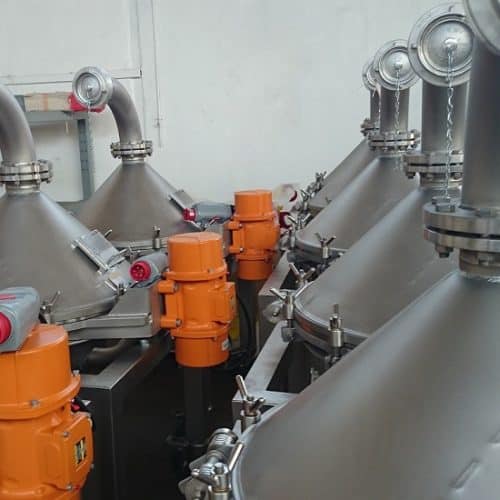
The JEL TWS tank truck screen – available in a practical design for chemicals, pharmaceuticals and food. For the plus in safety.
Small machine, big effect
Protective sieving as first quality control
The screen is installed as a protective screen between the silo trucks and the storage silos during tanker emptying in order to screen out unwanted foreign particles in the plastic powder.
It thus acts as a quality control before the PVC powder enters the storage silos and production.
For quick connection and disconnection when attaching the JEL TWS to the on-site conveying lines, the inlet and outlet of the screening machine are each provided with a coupling half. The flanged inlet and outlet elbows are rotatable and can thus be adapted to the local conditions.
Connect and get started right away
Coupled to the conveying line of the silo truck, the PVC powder enters the control screening machine by pneumatic pressure conveying via the feed pipe. Here, the product hits a specially designed relief cone below the feed pipe. This reduces the pressure before the product hits the screen, thus protecting the screen fabric.
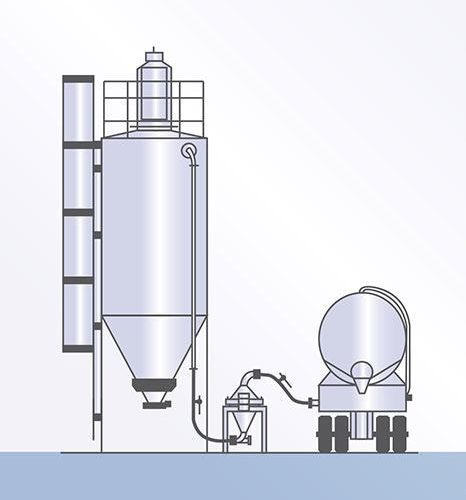
Operation with the JEL TWS during tanker emptying
Specifications of the JEL TWS for handling PVC powder
High-quality materials and components, quality seals and additional equipment for even more safety
Achieves 30 tons of throughput per hour despite electrostatic charging of the product
The TWS 800 model, made of stainless steel, has a sieve ring with a diameter of 800 mm and a sieve area of 0.5 m². The mesh size of the fabric ranges from 1 to 5 mm, depending on the specification of the powder supplied. The mesh is agitated by a vibration motor, which results in the screening out of any foreign matter present. To ensure complete screening out of impurities, a magnetic separator is installed below the screen mesh. In this way, even fine metal particles are separated out.
The screened PVC powder is then conveyed to the storage silo via the discharge bend and the connected on-site vertical conveying line. The TWS 800 is gas-tight up to 2 bar and achieves a throughput rate of 30 t/h when emptying tank trucks.
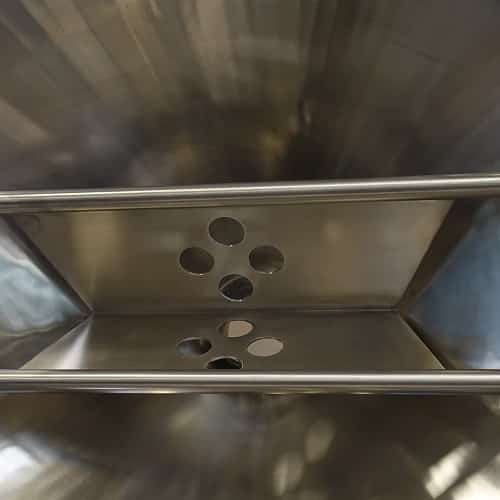
The product distributor in the lid reduces the pressure of the impacting product stream on the screen, thus protecting the screen mesh.
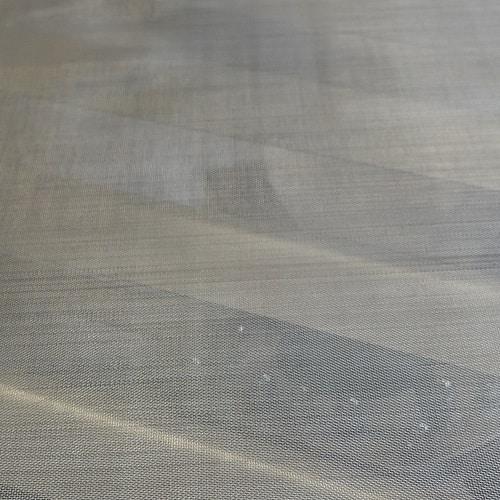
The fine mesh screen fabric retains foreign particles on the screen insert in the protective screening machine.
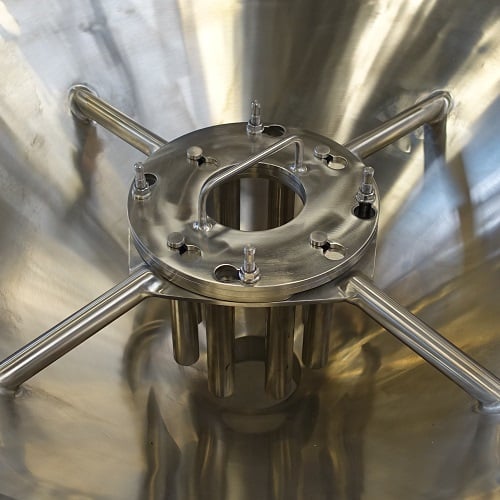
The magnetic separator is located below the screen mesh and removes unwanted metal residues.
Electrostatic charge of the PVC powder complicates the screening task
As the protective screen is used in mobile applications, the screen housing is mounted on a chassis fitted with block and swivel castors. Equipped with a plug connection and power cable, it is ready for use at different locations in no time.
The properties of plastic in its primary form complicate the screening task, as PVC can become electrostatically charged. This phenomenon can cause product particles to stick to machine parts. To prevent this problem, the screening machines used must be grounded. Due to the use at different locations, this is done via the respective silo truck. The TWS screening machines are each equipped with a long discharge cable and a cable drum to bridge different distances to the silo vehicle.
Tool free handling
After protective screening of a complete vehicle load, the foreign bodies remaining on the screen mesh are removed and the machine is cleaned. The lid, which is held in place by hinged screws, can be opened without tools and the screen insert underneath can be easily removed or replaced. All components in the interior that come into contact with the product are glass-bead blasted, and cleaning of the tanker screen in day-to-day operations is quick and residue-free.
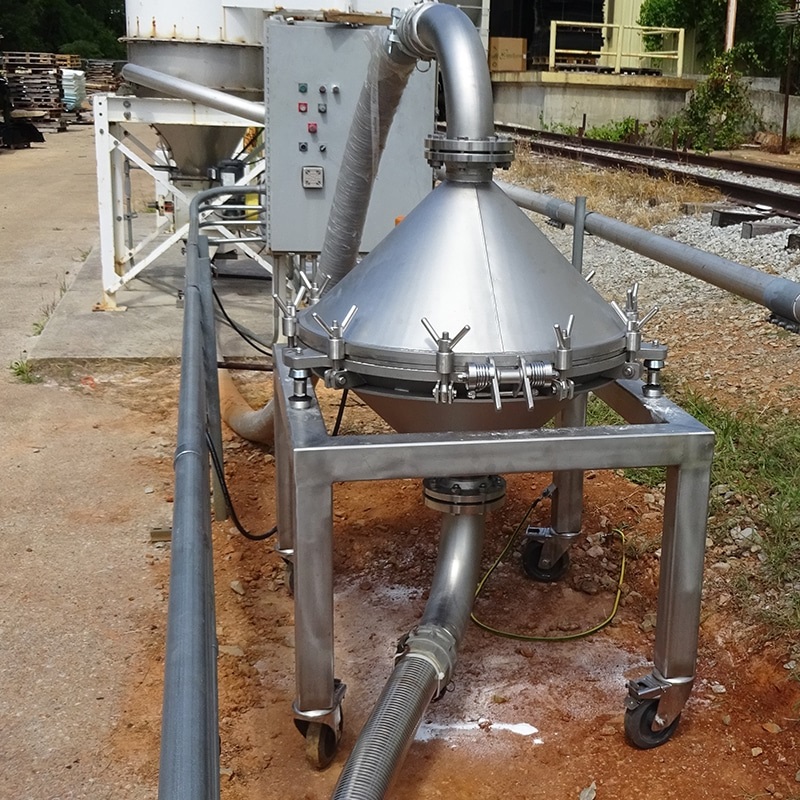
Mobile chassis: the JEL TWS in outdoor use
Conclusion
Thanks to protective screening with the JEL TWS screening machines, the manufacturer of plastic profiles is now in a position during tanker emptying,
to control the quality of all raw material deliveries,
to make a supplier assessment and
to make defective raw material supplies transparent
The investment has also paid off economically:
Improved quality of PVC powder
Reduced production downtime
Reduction of the cleaning effort
Reduction in the number of defective product batches
The JEL TWS control screening machines for tanker emptying are offered by Engelsmann in two size variants with a screen diameter of 500 and 800 mm or a screen area of 0.2 and 0.5 m². If required, the vibrating screens can be designed to meet GMP requirements and can thus be used in areas with high hygiene requirements. And/or – with the ATEX version – also in potentially explosive zones.

